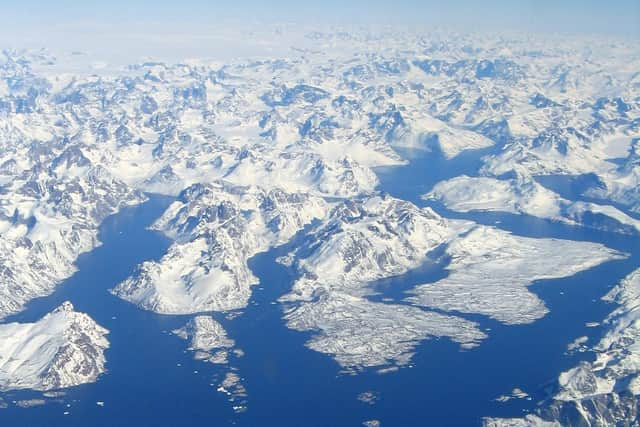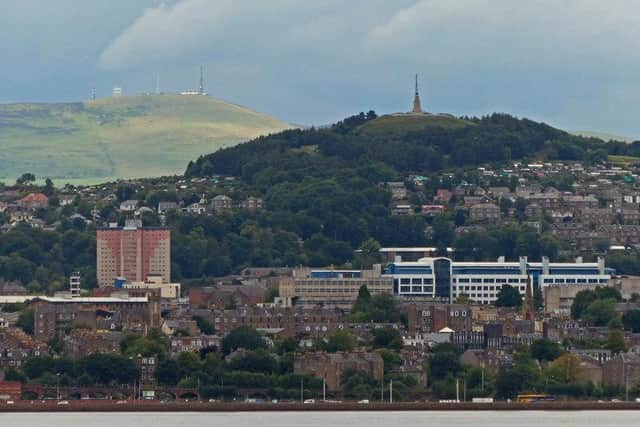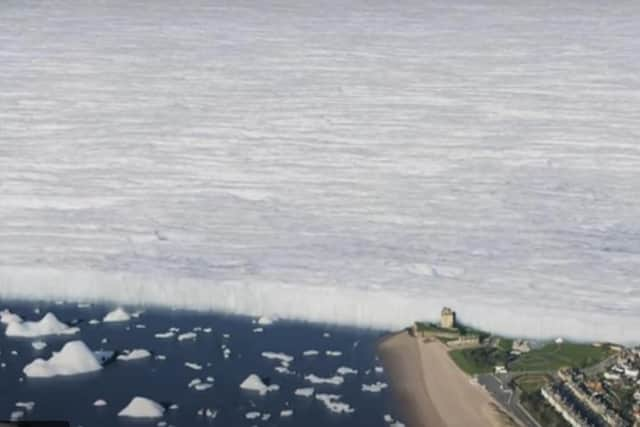When Scotland looked like Greenland some 20,000 years ago
A new short film, which was borne out of lockdown, charts how Scotland – and one city in particular – would have looked 20,000 years ago during the last Ice Age.
The piece was produced by US-based academic Max Van Wyk de Vries, a glaciologist at the University of Minnesota, who was visiting his Dundee-based girlfriend when the UK and US went into lockdown last March.
Advertisement
Hide AdAdvertisement
Hide AdFaced with working remotely 3600 miles from his workplace, Mr Van Wyk de Vries used his professional expertise to explore his temporary home.


He began researching the landscape of the local area and how it had been shaped by climactic events 20,000 years ago. At that time, Dundee sat beneath a gigantic, 1km-thick ice sheet that covered most of the British Isles as well as much of the North Sea and a large area of Scandinavia.
As the planet warmed again around 15,000 years ago, the retreating ice carved out city landmarks such as the 174m-tall Dundee Law, the Sidlaws and the Tay estuary.
Mr Van Wyk de Vries said: “I had been on a field trip helping to set up weather stations in Patagonia as Covid-19 started to spread across the world, so I got caught out a bit and wasn’t able to get back to the States.


“When we weren’t allowed to leave our local area during lockdown, my girlfriend and I spent a lot of time exploring Dundee and the small area beyond it we could visit for exercise.
“That got me thinking about these lovely landscapes and how they were formed by the flowing ice. I was working remotely, but missed doing something local, so I thought this would be an opportunity to work in my immediate environment, find out more about how it came to be the way it is and recreate how it would have looked 20,000 years ago.
“I studied a number of old papers using local data and ice models to calculate what this massive glacier would have been like. I also looked at satellite images of glaciers that still exist in Greenland to get an idea what they might have looked like in Scotland.”
Mr Van Wyk de Vries sought funding from the British Society for Geomorphology to bring his findings to a general audience and worked with Kieran Duncan, a lecturer in communication design at the university’s Duncan of Jordanstone College of Art & Design, to help visualise the project.


Advertisement
Hide AdAdvertisement
Hide AdThe result is a three-minute film that combines filmed footage, time-lapse video, and animated visualisation techniques to demonstrate the awesome scale of the glacier that covered the area and its impact.
Mr Duncan said: “Part of the film shows what a 1km ice sheet would have looked like on top of the Law, and I remember my mind being blown when Max first told me about that.
“You hear numbers like that, but it’s only when you see what that would have looked like in relation to something like the Law, which towers above the city, that you really start to conceive of just how massive this glacier was."
A message from the Editor:Thank you for reading this article. We're more reliant on your support than ever as the shift in consumer habits brought about by Coronavirus impacts our advertisers.
If you haven't already, please consider supporting our trusted, fact-checked journalism by taking out a digital subscription.
Comments
Want to join the conversation? Please or to comment on this article.
